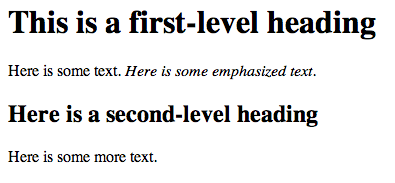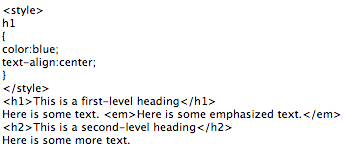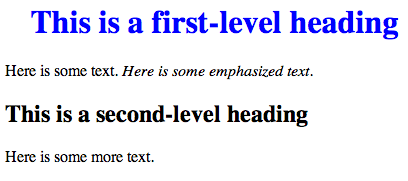In the early days of the World Wide Web, the creation of a website required knowing how to use hypertext markup language (HTML). Today, most websites are built with a variety of tools, but the final product that is transmitted to a browser is still HTML. HTML, at its simplest, is a text language that allows you to define the different components of a web page. These definitions are handled through the use of HTML tags, which consist of text between brackets. For example, an HTML tag can tell the browser to show a word in italics, to link to another web page, or to insert an image. In the example below, some text is being defined as a heading while other text is being emphasized.


While HTML is used to define the components of a web page, cascading style sheets (CSS) are used to define the styles of the components on a page. The use of CSS allows the style of a website to be set and stay consistent throughout. For example, if the designer wanted all first-level headings (h1) to be blue and centered, he or she could set the “h1″ style to match. The following example shows how this might look.


The combination of HTML and CSS can be used to create a wide variety of formats and designs and has been widely adopted by the web-design community. The standards for HTML are set by a governing body called the World Wide Web Consortium. The current version of HTML is HTML 5, which includes new standards for video, audio, and drawing.
When developers create a website, they do not write it out manually in a text editor. Instead, they use web design tools that generate the HTML and CSS for them. Tools such as Adobe Dreamweaver allow the designer to create a web page that includes images and interactive elements without writing a single line of code. However, professional web designers still need to learn HTML and CSS in order to have full control over the web pages they are developing.
- 1197 reads






